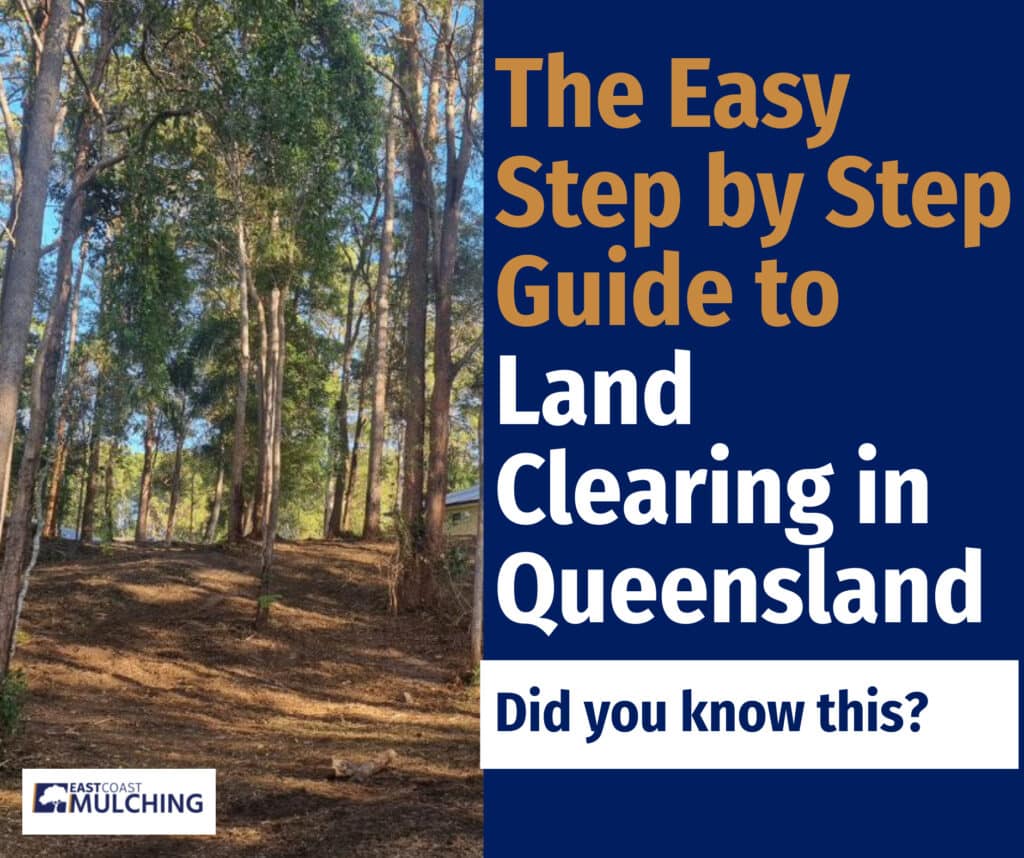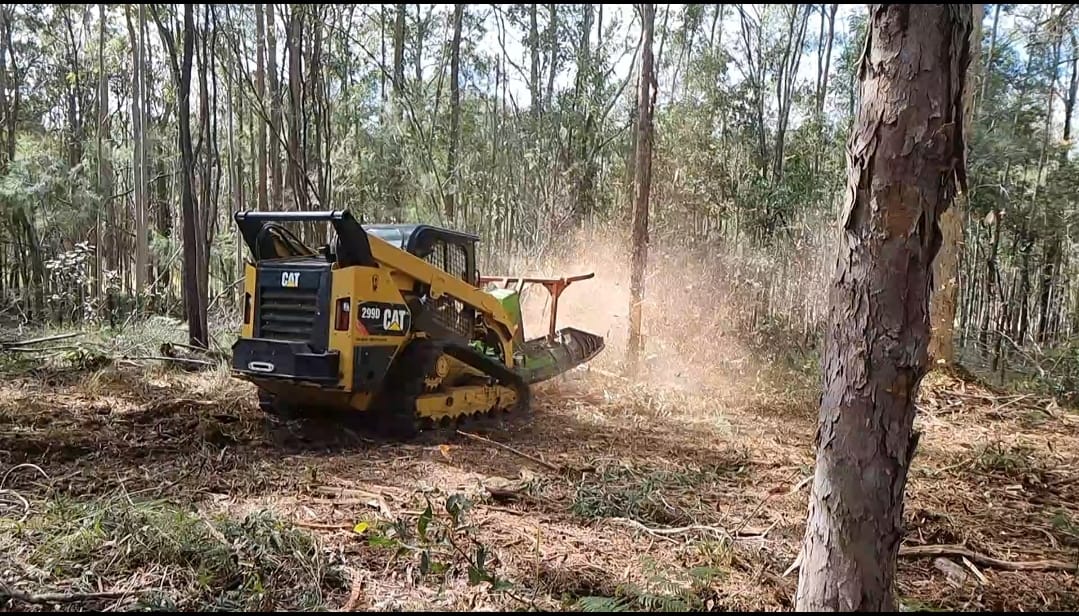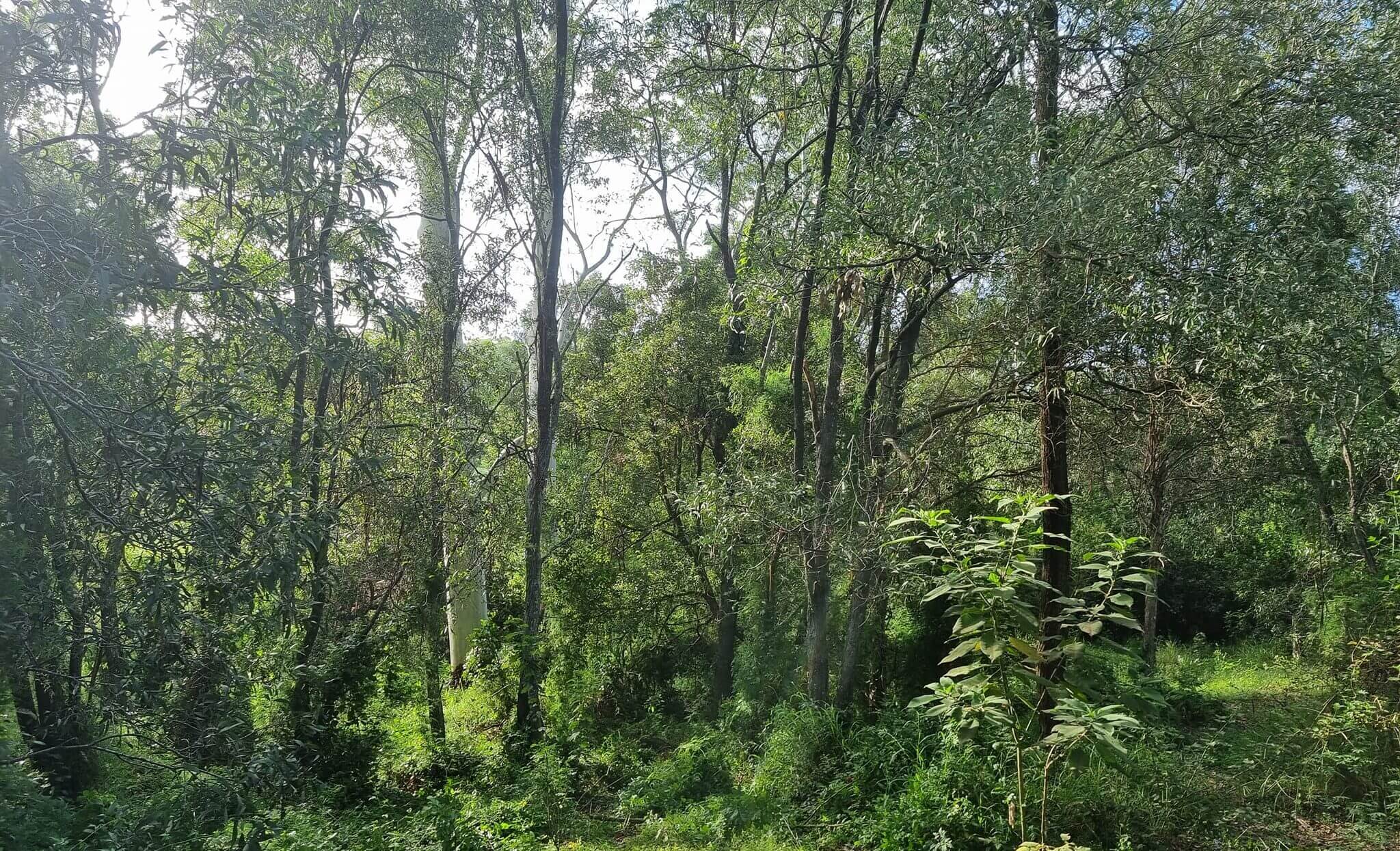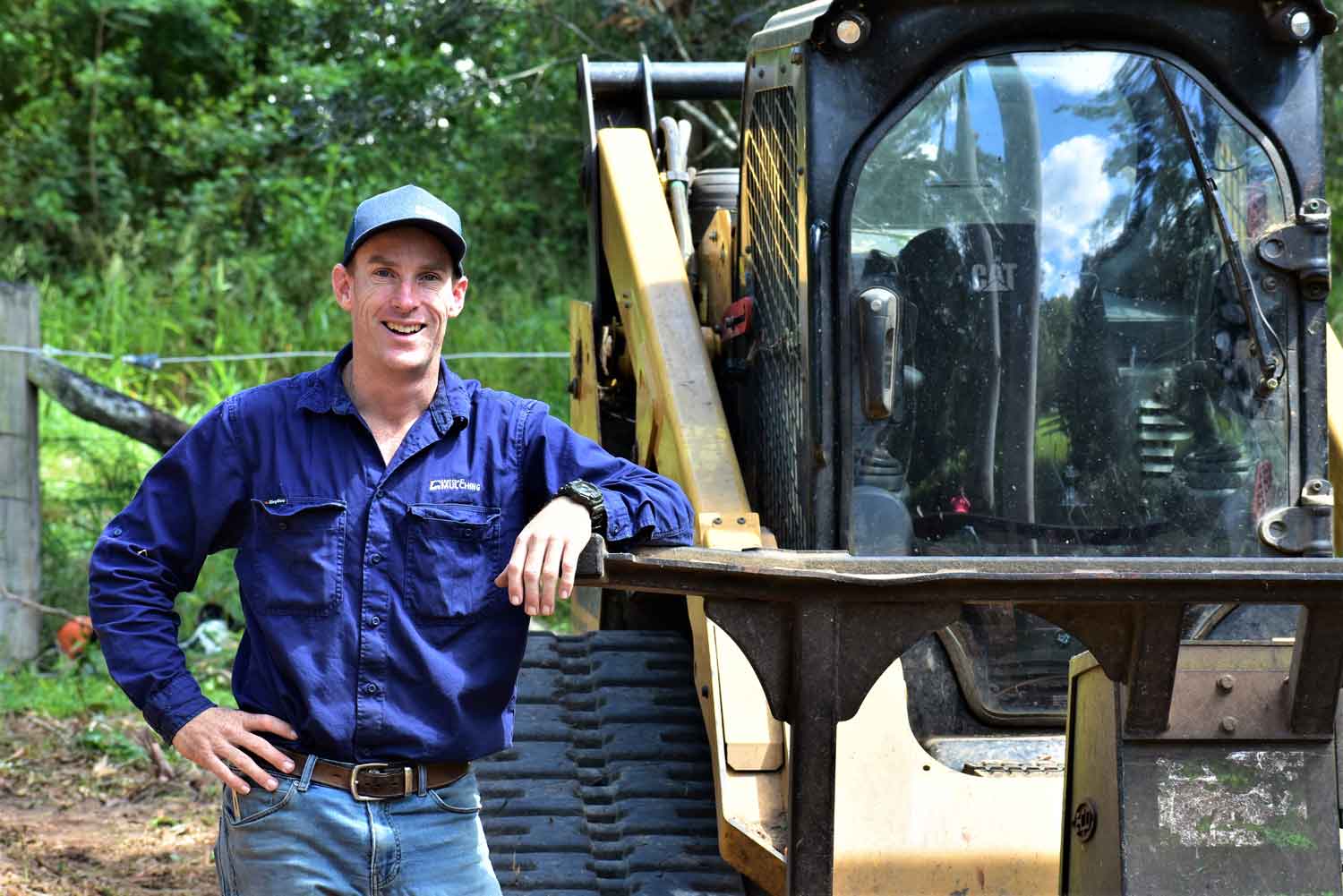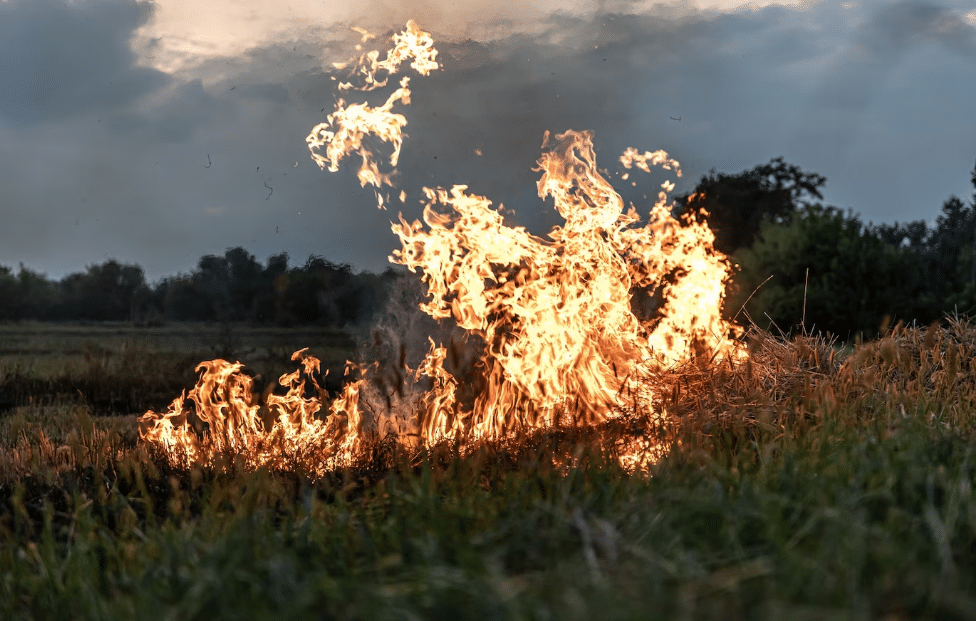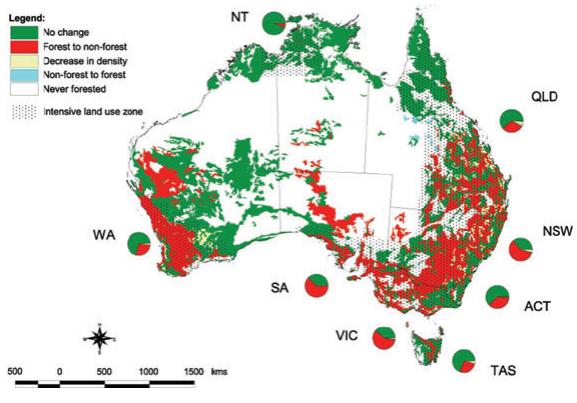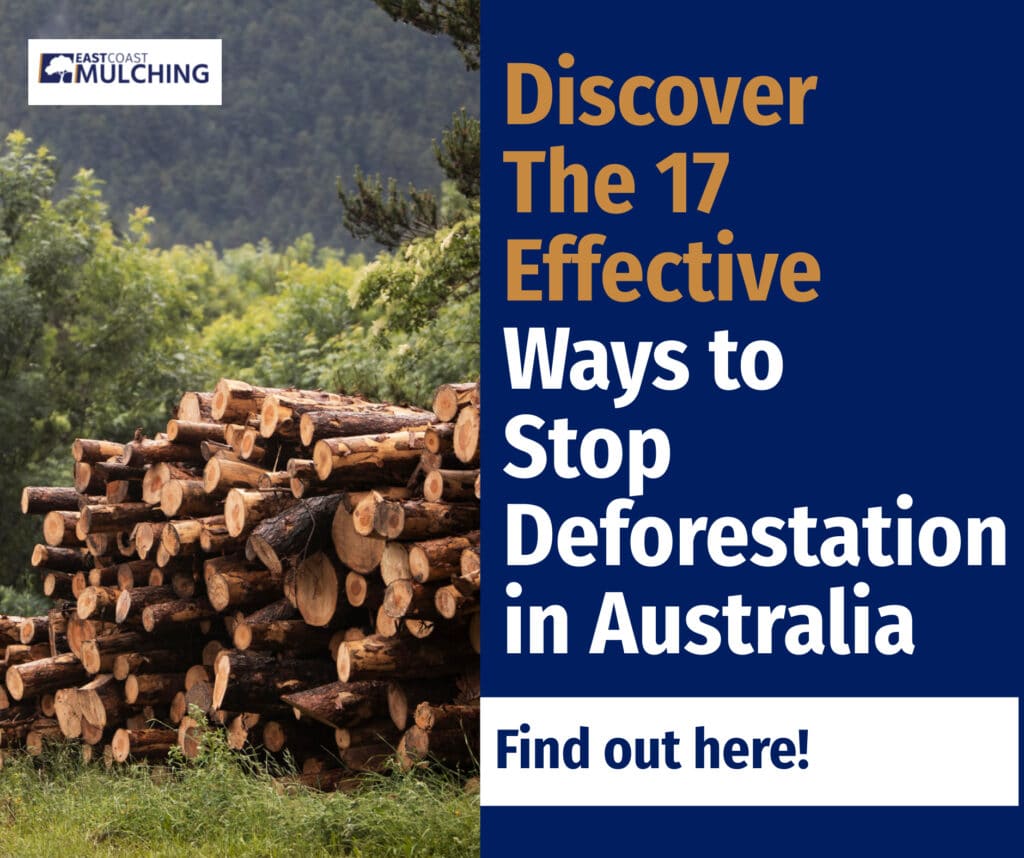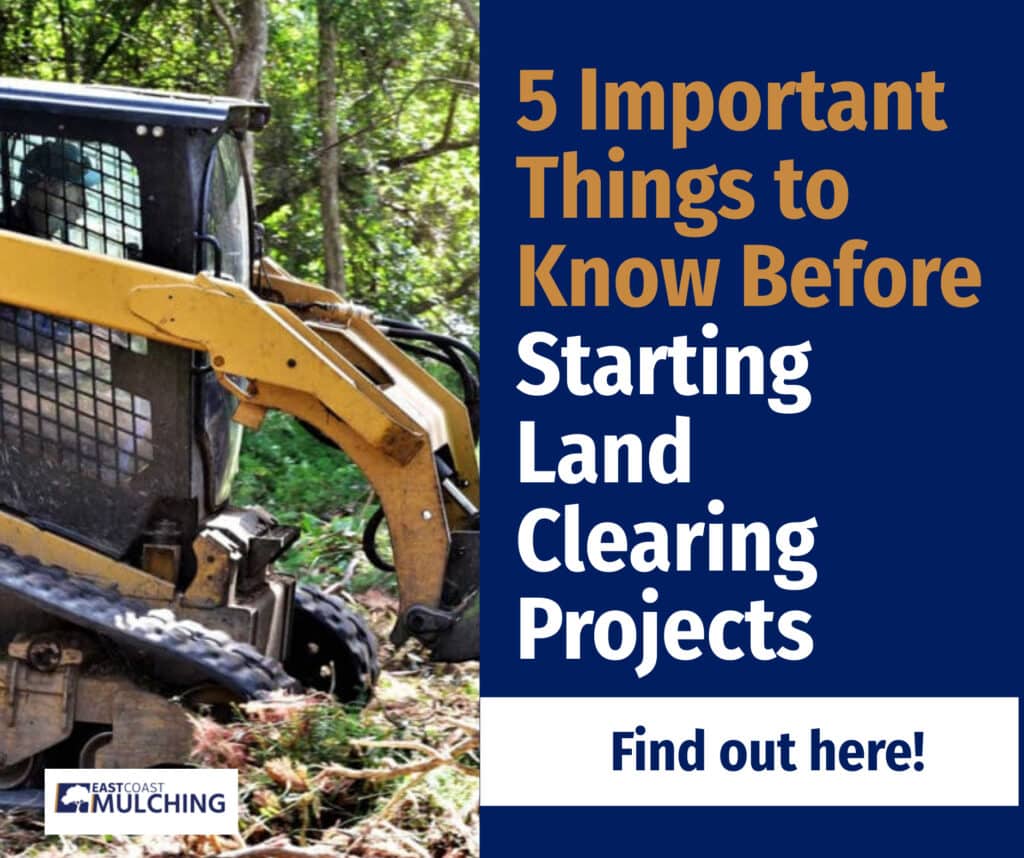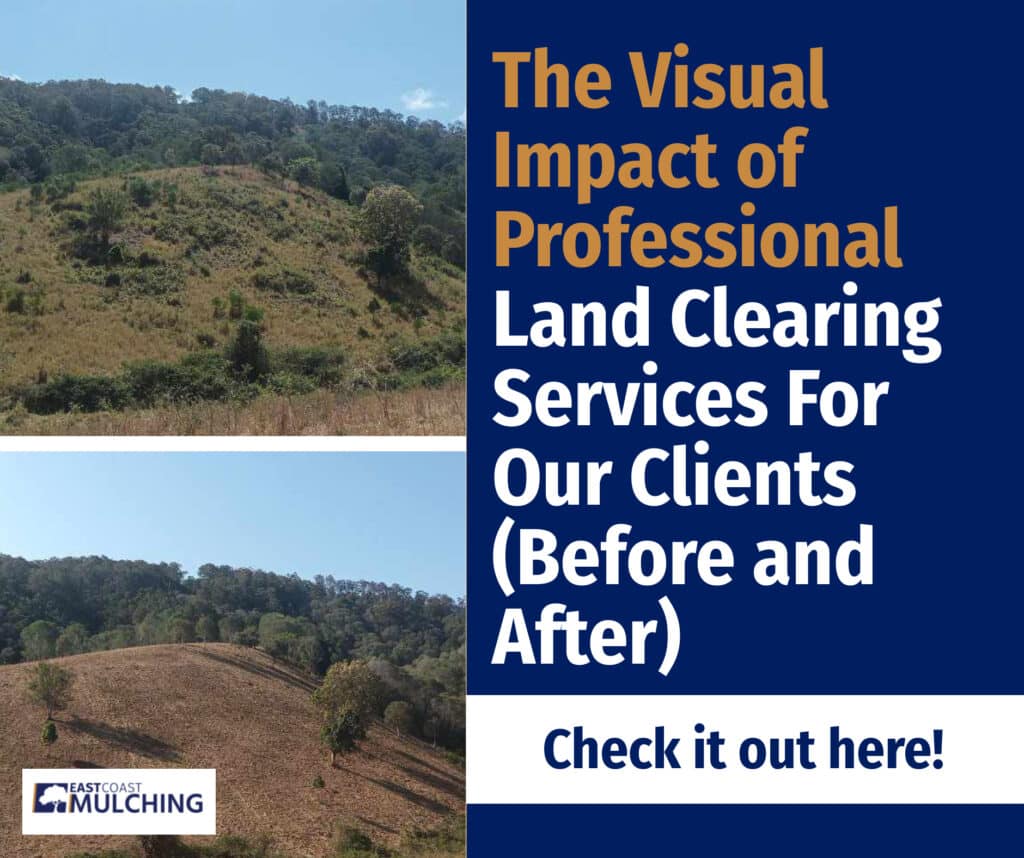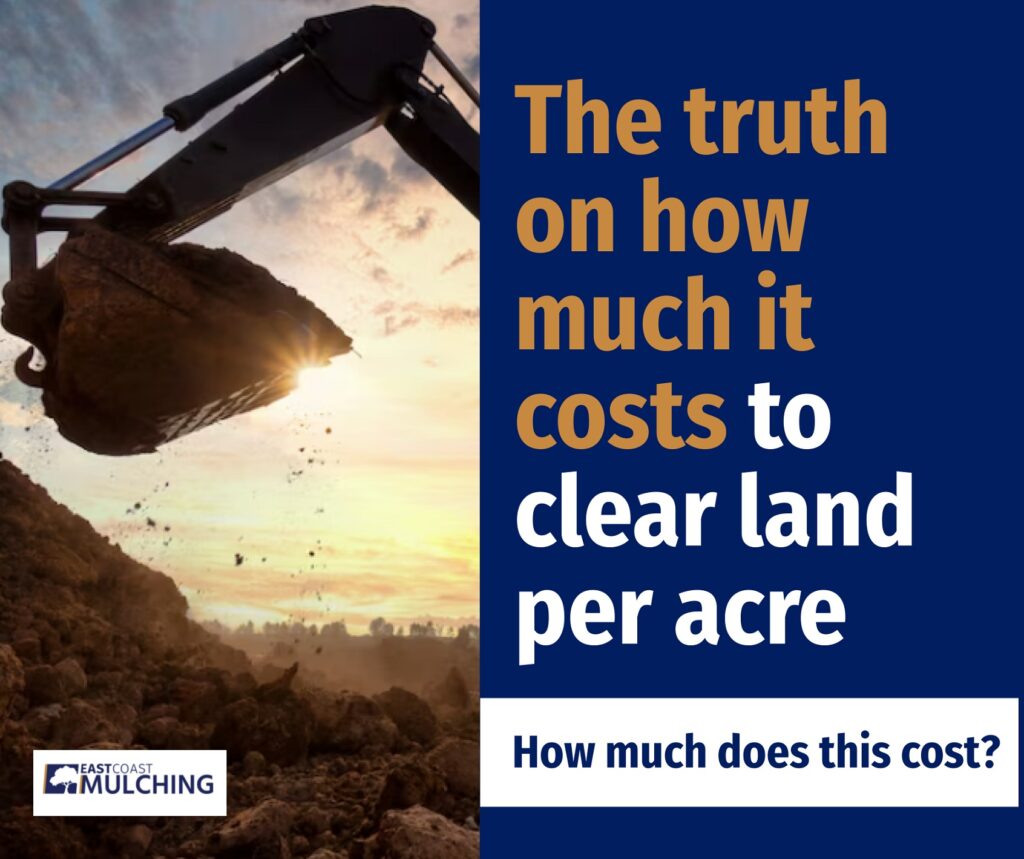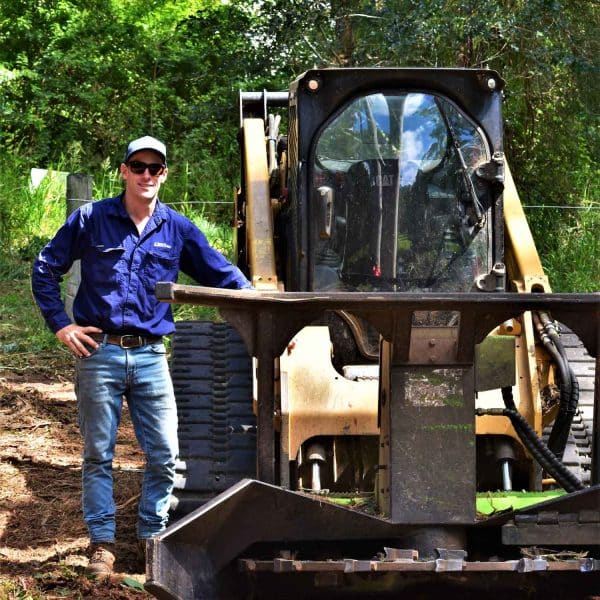Are you looking to clear your property but don’t know where to begin? This article will give you a step-by-step guide to vegetation removal.
- How do I assess my land?
- What regulations will affect me?
- How do I determine my budget?
- How do I remove existing structures before clearing?
- What are the available land clearing methods?
- What is the influence of climate change?
(GET A FREE QUOTATION TODAY!)
Certified Guide to Land Clearing
The best approach to your land clearing project
Land clearing can create a more usable land surface for development. However, avoiding unnecessary habitat loss and adverse effects on native forests is essential. Whether you’re planning for urban development, agricultural expansion, or want to improve your land for personal use, effective vegetation management is a must.
If you’re interested in clearing land, keep a variety of things in mind to do it properly and safely. This article will cover some basic steps you should consider before taking on any proposed vegetation clearing or plot clearing. Let’s get into it.
Firstly, you must thoroughly inspect your property and understand the requirements to ensure your land clearing achieves your aims.
How do I assess my land?
You should consider several factors when assessing how land clearing benefits your property.
What is your proposed land use?
Your plans for the property will determine how best to prepare it. For example, suppose you would like to clean it up and create a safe backyard for your family. You might focus on clearing away any weeds and underbrush, but keep any large trees as special features. Alternatively, you may intend to develop the land, create a building site, or turn it into farmland. In that case, you’ll need more intensive land clearing and proper land grading.
Is there a weed problem?
The national environmental significance of weeds in Australia has led the Australian government to implement specific requirements to control their spread. Unwanted vegetation can pose a severe problem for your land. Under the general biosecurity obligations, landowners control weeds on their property. It’s vital that land clearing doesn’t inadvertently allow weeds to take hold in another potentially vulnerable location like local reserves. For example, leaving cleared ragwort by a roadside may cause passing vehicles to pick up seeds and spread them across a broad area.
If your property has a weed infestation, you’ll need to consider the most appropriate way of dealing with it. Certain precautions and removal techniques may be required if the weed is noxious. It’s also crucial that, once you clear weeds, they cannot repopulate your property or surrounding areas.
When planning your vegetation clearing activities, be aware of what toxic plants are present, and implement appropriate weed hygiene measures, including:
- Cleaning remnant vegetation off clothing;
- Cleaning machinery used to clear weeds;
- Disposing of weed waste responsibly.
The complexity of your property’s terrain
The best way to clear your property depends partly on the land’s topography. It will be more challenging to contend with steep inclines and rugged terrain. The rocky ground can cause significant issues for machinery, leading to potential damage and work delays.
Uneven land will also impact the site’s usefulness for specific purposes. Suppose you’re looking to prepare the ground for a construction project. In that case, you may need to complete significant land grading to form a level pad to begin building.
Also, consider how easily machinery will be able to access your property. Where are the available entry points, and what impact will using those entry points have on the environment and other inhabitants?
If you would like to learn more or have any questions regarding our land clearing service, contact East Coast Mulching.
What structures are currently standing?
Any existing structures, like sheds, barns, and fences, may need to be removed before you can begin land clearing. You’ll need to consider what machinery will be required to knock them down and remove them.
It may be possible to work around specific structures. Still, given the added complexity that will likely entail, eliminating them is probably more advisable if they are non-essential.
How will land clearing affect native vegetation and animals?
Native forest logging poses dangers for threatened species. Wildlife habitat loss for native animals, and the loss of native vegetation in Australia’s forests, are significant drivers of government action on environmental issues. Understanding the land clearing process will play into concerns around native forests is critical.
The newly established Australian Government Department of Climate Change, Energy, the Environment and Water oversees the National Vegetation Information System (NVIS). This system provides data on the distribution of vegetation types across Australia. Using detailed publicly available datasets may be helpful in regional-level analyses of vegetation mapping.
Koala habitat areas
The government is mandated to protect koala habitat areas, the primary threat to the koala population being habitat destruction through deforestation. The Queensland state government created the state code for development in South East Queensland koala habitat areas to stabilise the net land cover of koala habitats.
You can identify if your property is in a koala habitat area by requesting a free vegetation management property report. If your land does contain a koala habitat, you may need to seek local council approval before disturbing it. You may be exempted from this requirement if you are:
- Mitigating a fire risk;
- Preventing damage to infrastructure or people;
- Managing a declared disaster situation;
- Complying with an accepted vegetation development clearing code.
What regulations will affect you?
Vegetation management act
You may think that if you own a piece of land, it’s yours to do with as you please. In reality, there are many regulations around land use. Land clearing in Queensland falls under the Vegetation Management Act 1999, which, along with associated regulations, collectively form Queensland’s vegetation management framework. This framework aims to protect native vegetation.
Before undertaking any land clearing activities, it may be necessary to identify whether these regulations protect native plant species on your property. You can request a free property report and vegetation maps from the Queensland Government to clarify where you stand.
Sunshine Coast regulations
On the Sunshine Coast, removing trees is covered by the Sunshine Coast Planning Scheme 2014. The scheme covers the land management goals at the local level and the exemptions and prohibitions governing land clearing.
Several exempt clearing works do not require prior governmental development approval for a clearing permit. These exemptions include clearing for:
- Fire mitigation purposes;
- Establishing a fence or road;
- Creating grazing land;
- Maintaining infrastructure;
- Eliminating vegetation that poses an immediate risk to people or infrastructure;
- Controlling non-native plants or declared pests.
Land Clearing permits
These exemptions won’t cover some clearing projects. In this case, you must request a suitable person, typically an ecologist or botanist, to survey the impact area’s flora. The impact area includes the site clearing and a 100m buffer zone surrounding it. This assessment and resulting survey report must comply with the flora survey guidelines.
No protected vegetation found
You can clear without a permit if the survey finds no threatened plant species in the clearing impact area. Before you begin, submit the flora survey report and an exempt clearing notification through online services at least a week beforehand.
Protected vegetation found
You must apply for a clearing permit if you find a threatened species, which you can do through online services. When making your application, answer all relevant questions and include any required supporting information. You will also pay a fee when applying.
The current fee is $3216.00. However, a concessional rate of $802.00 may apply in certain instances, including clearing for:
- Scientific or educational research;
- Establishing necessary infrastructure such as:
- Fences
- Roads
- Firebreaks
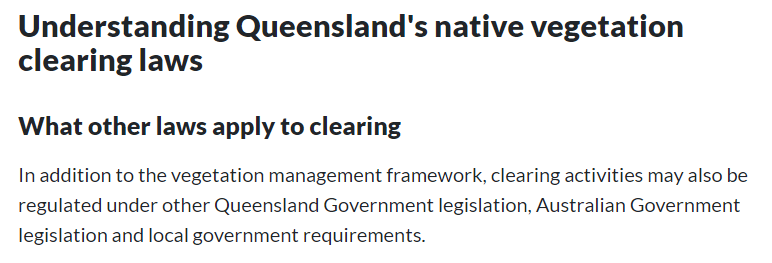
(GET A FREE QUOTATION TODAY!)
How do I determine my budget?
Clearing away vegetation can be an expensive undertaking. The prospect of dealing with heavy machinery might daunt you because of the practical challenges and associated costs.
Many things can factor into the cost of a land clearing project. Set realistic goals around what you want to achieve and what you can do yourself versus what you’ll need to contract out to someone experienced.
Your expenses
You will incur a cost even if you’re prepared to take on specific tasks yourself. You might need to rent heavy machinery like a bulldozer to remove structures on the property or a tractor to move a large boulder. You’ll likely need to rent a skip bin to collect leftover debris.
Depending on your method of clearing, there may be insurance requirements. For example, under certain circumstances, local councils may require that you have a particular public liability insurance before undertaking any prescribed burning.
Working with land clearing contractors
Some parts of these projects are best left to the professionals to complete correctly and safely. The cost of working with a contractor will depend on different factors, such as:
- The size of the property;
- If there is rugged terrain;
- How quickly you need the job done;
- The complexity of requirements like targeting or preserving particular vegetation categories;
- How far do they need to travel to reach your property?
When shopping around for a land clearing and mulching near me, look for reviews, informative websites, and experience.
Reviews can be beneficial if you approach them correctly. It’s tempting to look for the contractor with the most 5-star reviews and opt for their land clearing services. However, you must read what the reviewers wrote to understand how they conduct their business. Also, look at reviews across various scores, if they exist. Prioritising either excellent reviews or bad reviews can distort your perception.
You may have complex terrain and tricky features like hills and valleys. Also, look for land clearing contractors with experience working on similar properties. Land management operators who cannot show they have handled such sites in the past with excellent results may not be able to provide an appropriate service.
Contact us with questions about a land clearing or forestry mulching project. We are here to help whether you hire us or not.
How do I remove existing structures before clearing?
1. Assessment and Planning
- Inspect the Structure. Before you start, inspect the structure to determine its condition, materials used, and potential hazards. This will help you decide the best removal method.
- Check for Utilities. Ensure no electrical, water, or gas lines are running to or through the structure. If there are, they need to be safely disconnected and capped off.
- Get Necessary Permits. Depending on the structure, you might need a permit to demolish or remove it. Check the WorkSafe website for more information.
2. Safety Precautions
- Wear Protective Gear. This includes safety goggles, gloves, a hard hat, and steel-toed boots.
- Secure the Area. Set up barriers or caution tape around the demolition area to keep unauthorised people and pets out.
- Have a First Aid Kit. Accidents can happen, so having a first aid kit is essential.
3. Demolition
- Manual Demolition. Manual demolition with sledgehammers, pry bars, and other hand tools might be sufficient for smaller structures like sheds.
- Mechanical Demolition. You might need machinery like a bulldozer or an excavator for larger structures or those made of more robust materials.
4. Dealing with Waste
- Sort and Recycle. Separate recyclable materials like metal, wood, and certain plastics. Many recycling centres will pay for scrap metal.
- Hazardous Materials. Older structures might contain dangerous materials like asbestos or lead paint. If you suspect the presence of these materials, consult a professional for safe removal.
- Disposal. Rent a dumpster or hire a junk removal service to dispose of non-recyclable waste. Ensure you’re disposing of waste in an environmentally friendly manner and comply with local regulations.
5. Land Clearing
- Remove Foundations. If the structure had a foundation, you’d need to dig it up and remove it. This might require machinery.
- Level the Ground. Once the structure is removed, you’ll likely need to level the ground, especially if you plan to build or landscape.
- Soil Preparation. If you plan to landscape, you might need to improve the soil by adding compost or other organic matter.
6. Final Inspection
Once everything is cleared, do a final inspection to ensure all debris is removed and the land is safe and ready.
Tips
- Hire Professionals. Hiring a professional might be safer and more efficient if you’re unsure about any step or the structure is large.
- Reuse and Repurpose. Before demolishing, see if there are materials or fixtures you can reuse in other projects or donate.
If you would like to learn more or have any questions regarding our land clearing service, contact East Coast Mulching.
What are the available land clearing methods?
Clearing and grubbing
Clearing and grubbing is a common form of land clearing that involves clearing vegetation off the land and pulling roots out of the ground. You may need several pieces of equipment to entirely clear vegetation from a property using this method, including:
- Bulldozers
- Woodchippers
- Chainsaws
- Excavators
It may seem like much machinery is needed to clear and grub properly, which is true. On top of the equipment, you may also use vehicles such as dump trucks to transport the debris off the property.
Clearing and grubbing are commonly paired with controlled burning to remove cleared woody vegetation. While popular, this method can potentially come with a few environmental consequences.
Environmental impact
The root systems of existing vegetation are essential to maintaining soil integrity. Uprooting shrubs and fallen trees disturb the ground, churning and breaking it up. Once this happens, there is an increased risk of soil erosion. Precious fertile soils can be blown away by the wind or washed away in a storm, ultimately leading to infertility. Soil infertility is almost impossible to reverse once it happens.
Soil erosion also leads to greater chances of flooding, as water that would usually absorb into the ground becomes runoff instead. Sediment can also accumulate in waterways, which clogs them up and prevents them from being able to carry excess water away.
Prescribed burning
Prescribed burning is another popular form of land clearing in Australia. They are typically used to counteract the accumulation of fire fuel, like dense and dried-out undergrowth, which mitigates the threat of bushfires. Uncontrolled fires have become a particularly critical issue, given the impact of global climate change on Australia’s bushfire severity.
You must complete a considerable amount of planning before undertaking a prescribed burn. Many elements go into a successful burn:
- A clear understanding of what you want the burn to achieve;
- A fire plan that includes details like:
- The area to be burned;
- What fuels exist in the prescribed area;
- What equipment and personnel are required to create fire breaks and ignite and control the fire;
- Identifying sites to be protected from the burn;
- Assessing the risk to any nearby communities;
- Check the Australian Bureau of Meteorology for the best time for a prescribed burn.
Permits for prescribed burning
Lighting fires outside is strictly controlled in Queensland under the Fire and Emergency Services Act 1990 and will generally require a permit. Exempt fires are:
- Fires less than two metres in any direction;
- Fires lit in a proper outdoor enclosure for cooking or warmth;
- Fires for specific industrial purposes.
For fires not covered by an exemption, you can obtain a permit from the fire warden with jurisdiction over the area of the proposed prescribed burn. The process of applying for a licence to light a fire is the following:
- Find out from your local council if there are any restrictions on lighting fires or if they must give you written permission;
- Inform your neighbours of your intention to apply for a permit. Record when you contacted them and if they raised any objections;
- Complete the application form and submit it to the local fire warden;
- Before making a decision, the fire warden may:
- Request additional information about the burn and your experience;
- Arrange to visit your property;
- Advise you on the burn;
- Confirm that you gave your neighbours sufficient notice.
If the fire warden grants the permit, they will detail any conditions and may provide additional advice. If they reject your application, they will provide reasons for the rejection. You may reapply after addressing the concerns raised or appeal to the Chief Fire Warden.
Advantages and disadvantages of prescribed burning
Prescribed burning can have positive environmental effects. Fire is natural in many ecosystems and can foster new high-value regrowth by clearing away dead matter. It also lessens the impact of bushfires, making them easier to control and not as severe because there is little fuel available.
However, prescribed burns can always get out of control, regardless of the safety precautions. An uncontrolled fire puts delicate ecosystems at risk and threatens the safety of people and infrastructure in the area. Fire can also lead to erosion by eliminating ground cover and exposing the soil. It may negatively affect soil properties as well.
Forestry mulching
Forestry mulching is the most environmentally sustainable way to clear land while remaining cost-efficient and highly effective. With a forestry mulcher, you can turn vegetation directly into mulch, which is spread evenly over the ground.
Forestry mulching comes with several benefits:
- Allows for highly targeted clearing;
- Eliminates the need for multiple pieces of heavy machinery;
- Effectively suppresses weed growth;
- Can handle complex terrains;
- Mitigates fire risks by maintaining soil moisture.
Targeted tree removal
You may only want to remove a few trees. As forestry mulching specialists, we can perform land clearing operations in a highly targeted way. Our expertise extends to targeted tree maintenance, allowing us to help you achieve your landscaping goals while preserving the overall health of your property. We can also safely remove small trees posing a risk to infrastructure like your house or power lines.
Suppressing weed growth
Targeting invasive vegetation will help native species to repopulate an area. Land cleared through mulching can suffocate weeds and promote natural vegetation.
Mitigating fire risks
Forestry mulching can minimise fire risks in a few ways. After shredding vegetation, mulching machinery spreads the resulting mulch evenly over the ground. The resulting mulch layer helps to regulate the temperature of the soil. Mulch also helps the earth retain moisture. Keeping moisture in the ground inhibits the ability of fires to ignite and persist.
The three primary benefits of our services to you are:
- Cost efficiency
- Environmental friendliness
- Effective and reliable land clearing services
Cost efficiency
Forestry mulching does away with the need for expensive equipment to knock over and haul away vegetation. We can keep costs down with a single machine while providing top-notch service. We can also work quickly, which offers better value to you.
Environmental friendliness
Turning vegetation into mulch gives nutrients to the earth, assisting with new high-value regrowth vegetation. Mulching also leaves root systems intact, as taking roots out is often unnecessary. Retaining root systems prevents soil integrity from being compromised and avoids erosion.
Effective land clearing
East Coast Mulching use a top-of-the-range mulcher to provide the best service possible, and we use one machine to deal with vegetation on the spot. We don’t need to haul away or burn any leftover debris, enabling us to work faster than other clearing services without sacrificing quality.
Skid steers vs compact track loaders
Within forestry mulching, different operators use different machines. Two of the most common are skid steers and compact track loaders. The primary difference is that skid steers drive on wheels, and track loaders have tracks. Each has strengths and weaknesses, but track loaders are superior in most activities.
Skid steers are particularly useful on hard ground like concrete that would wear on tracks. However, uneven ground inhibited by mud or snow favours track loaders. This advantage makes our SS Eco Mulcher the better option for work in bushland.
Our compact track loader is gentle on the land as tracks have a larger surface area, distributing the machine’s weight more evenly. This even distribution prevents soil from getting churned up and damaged during operations. Track loaders also have superior traction, which allows us to navigate rugged terrain and operate in adverse conditions.
(GET A FREE QUOTATION TODAY!)
What is the influence of climate change?
Climate change is becoming an increasingly severe issue in land management. Carbon dioxide is a greenhouse gas that traps heat from the Sun. With elevated levels of atmospheric carbon dioxide, there are long-term climate impacts. Improper land clearance plays a significant role in exacerbating climate change.
As a developed nation, Australia performs extensive clearing. This is particularly the case in eastern Australia. Queensland has accounted for between 50-65% of native forest loss over roughly the last 40 years. It’s more important than ever to find ways to develop land sustainably.
Forestry mulching has advantages that can assist in the fight against climate change.
Carbon sequestration
Carbon sequestration is storing carbon to prevent it from escaping into the atmosphere as carbon dioxide. Trees and soil are some of the most significant carbon sinks available. Here’s how forestry mulching helps preserve the carbon sequestration properties of soil.
1. Organic Matter Decomposition
When the mulched vegetation decomposes, it gradually releases nutrients into the soil. This organic matter enriches the soil and increases its carbon content. The decomposition process is slower than if the vegetation were burned or removed, allowing for a more extended carbon storage period in the soil.
2. Soil Protection
- The layer of mulch acts as a protective cover for the soil, reducing its exposure to the elements. This cover helps prevent soil erosion, which can lead to the loss of topsoil—a significant carbon storage component.
- The mulch also reduces the impact of heavy rainfall on the soil, preventing soil compaction and helping maintain its porous structure, which is essential for carbon storage.
3. Soil Microbial Activity
The addition of organic matter from the mulch provides food for soil microbes. As these microbes break down the organic matter, they incorporate carbon into the soil, enhancing its carbon sequestration capacity.
A healthy microbial community also promotes soil aggregation, which creates stable carbon storage sites in the soil.
4. Reduction in Soil Disturbance
Traditional land-clearing methods, such as bulldozing or burning, can significantly disturb the soil, releasing stored carbon into the atmosphere. Forestry mulching is less disruptive, helping to maintain the soil’s carbon storage capacity.
5. Temperature Regulation
The mulch layer acts as an insulator, moderating soil temperatures. Cooler soil temperatures can slow down the rate of organic matter decomposition, leading to reduced carbon dioxide emissions from the soil.
6. Moisture Retention
Mulch helps retain soil moisture by reducing evaporation. Moist soils support microbial activity and plant growth, which affect carbon sequestration.
7. Promotion of Regrowth
By leaving the soil relatively undisturbed and enriched with organic matter, forestry mulching can promote the rapid regrowth of vegetation. This new vegetation will absorb and sequester carbon from the atmosphere through photosynthesis.
Preserving biodiversity
Forests support a wide range of plant and animal species. By applying methods that promote regeneration, mulching can help promote biodiversity. By preserving the land’s natural biodiversity, forestry mulching can help maintain ecological balance, which is critical in climate change.
In conclusion
There are many things to consider before you begin clearing your property. It is essential to ensure that land clearing does not significantly impact protected areas of native vegetation.
The Australian government is concerned with protecting precious natural resources such as vegetation assets, and it’s everyone’s responsibility to ensure we approach these projects appropriately.
Land can be cleared in a few ways, and forestry mulching provides the right balance of environmental sustainability and effectiveness for your money. Additionally, employing professional tree specialists is essential to ensure a successful and environmentally friendly project.
East Coast Mulching has considerable experience working with local councils and private enterprises on land clearing and tree removal projects. If you have vegetation you need to clear, our tree removal services can help you understand your options and the best way to tackle the job.
If you would like to learn more or have any questions regarding our land clearing service, contact East Coast Mulching.

